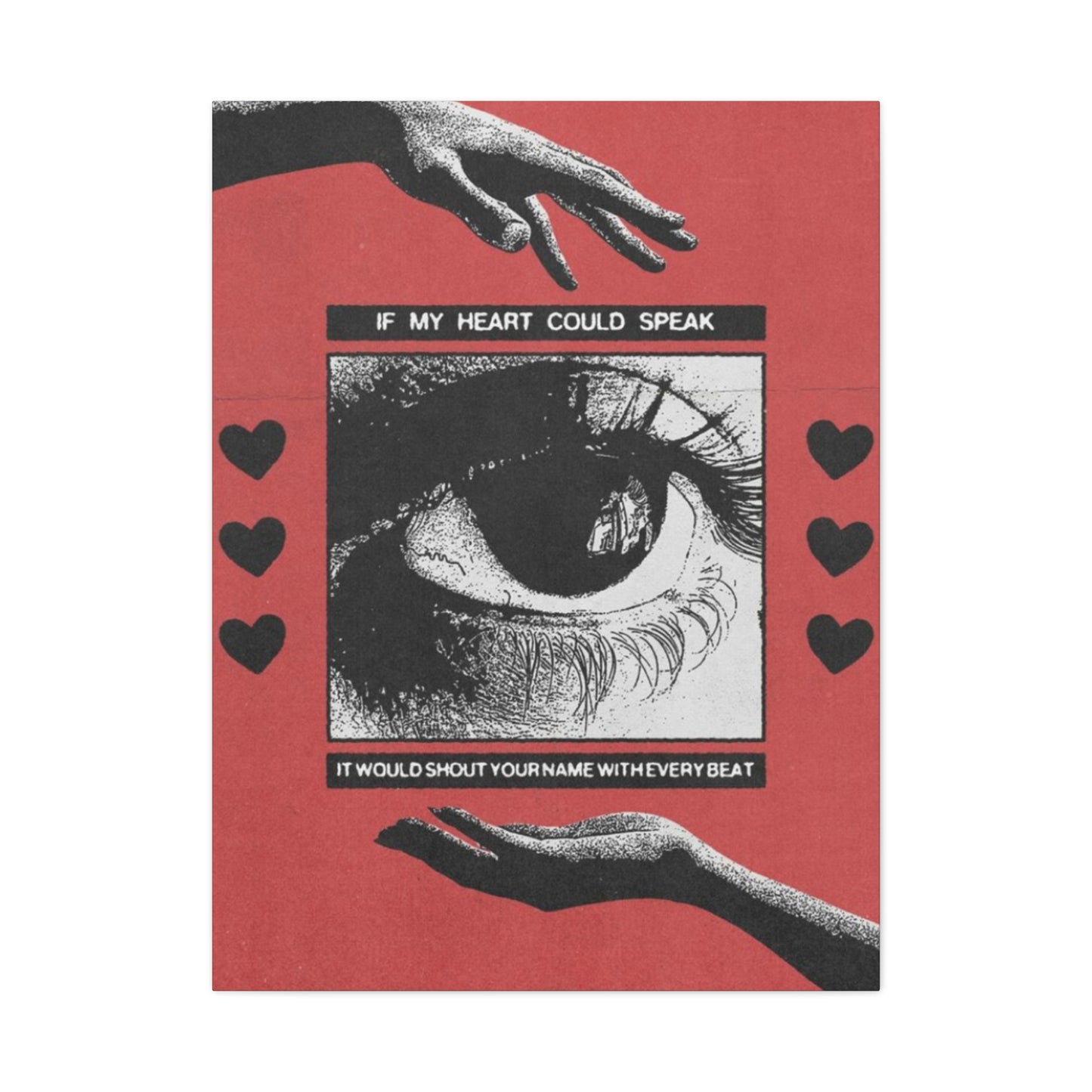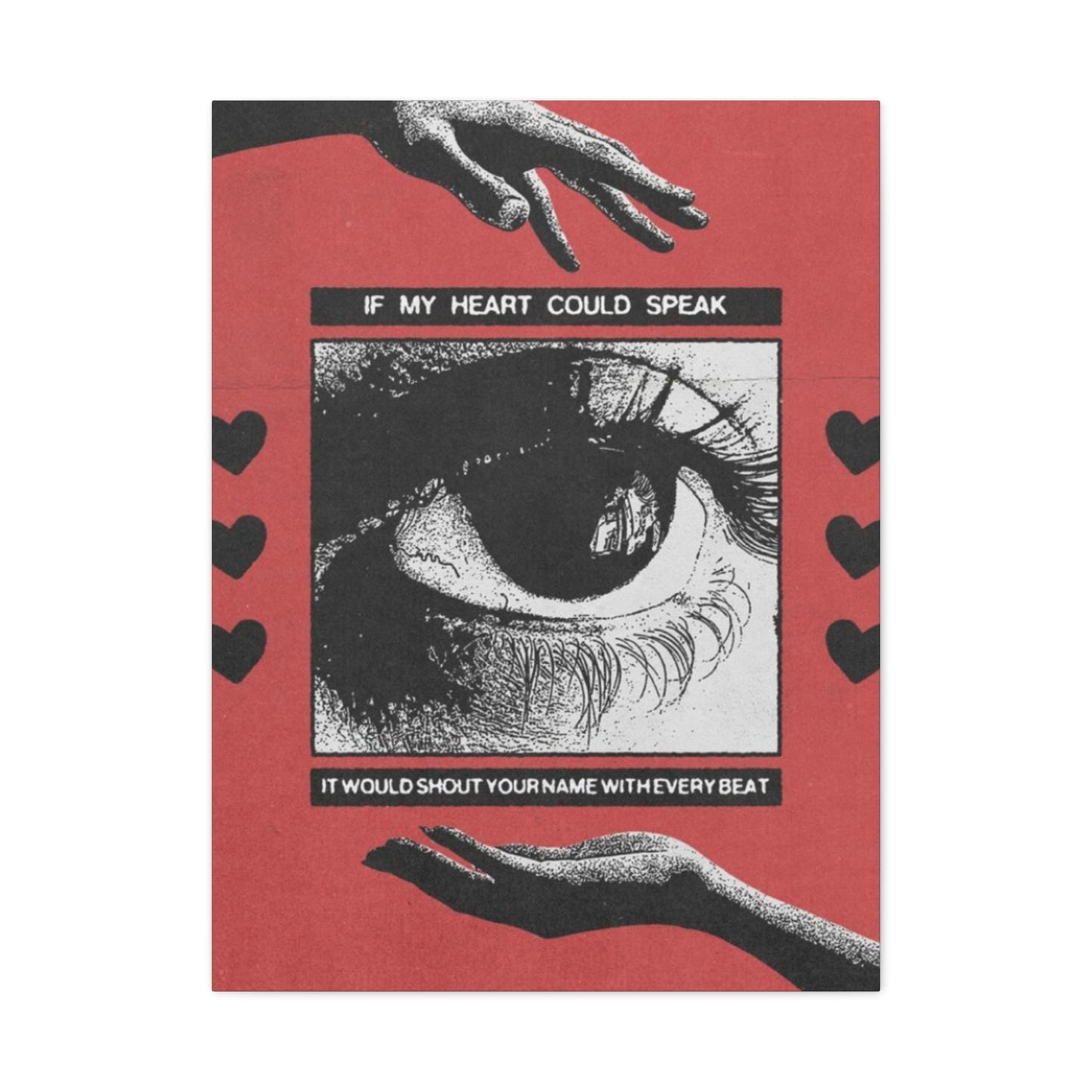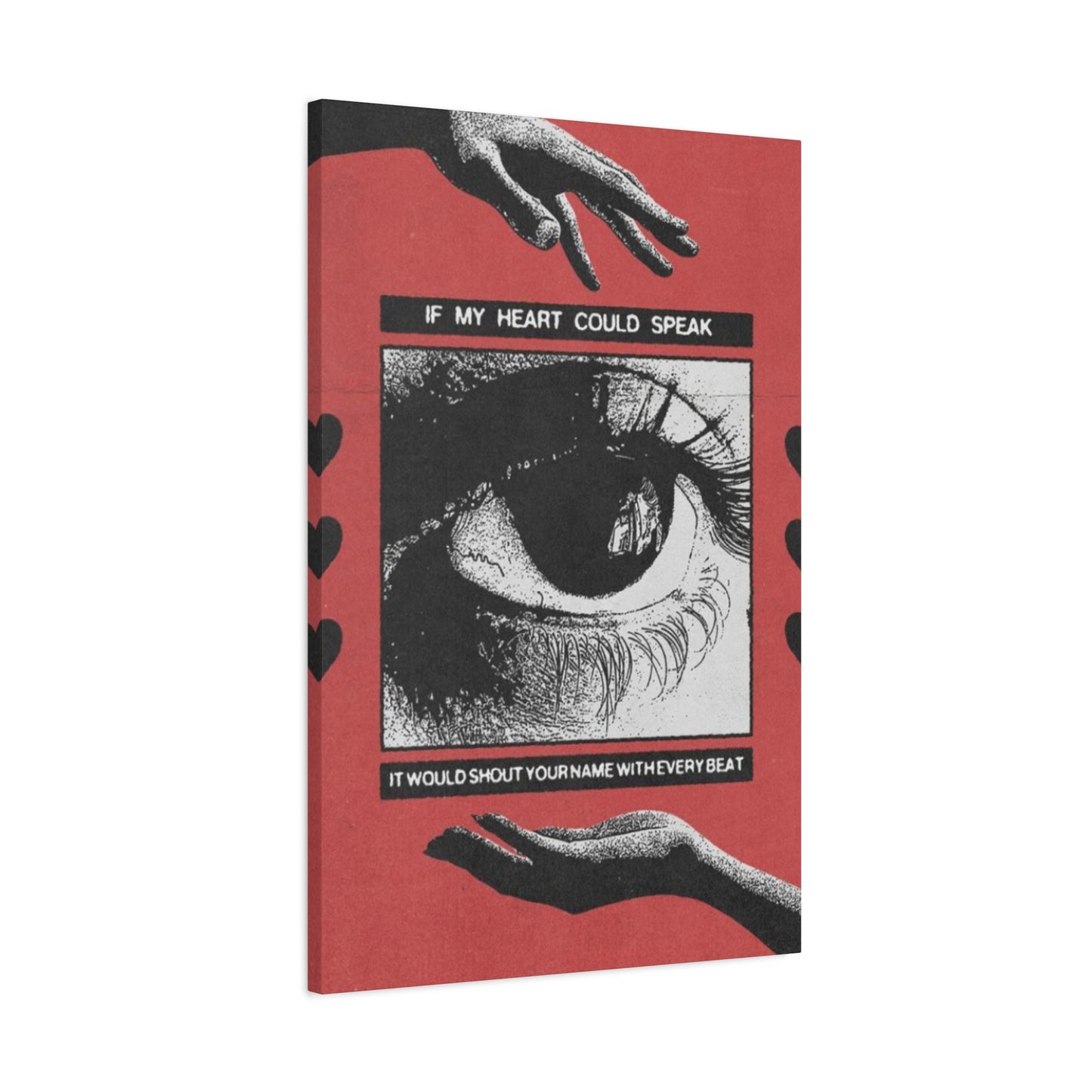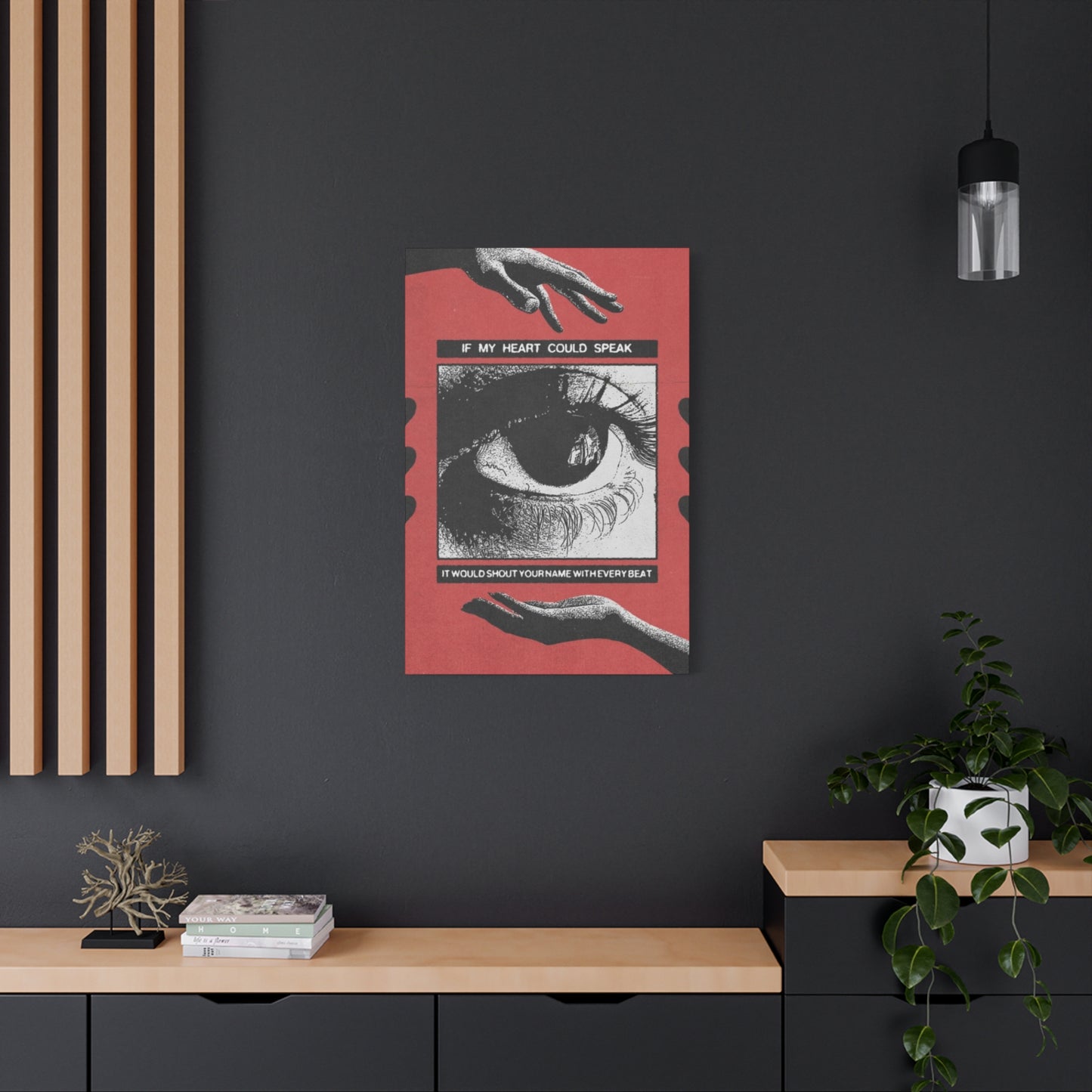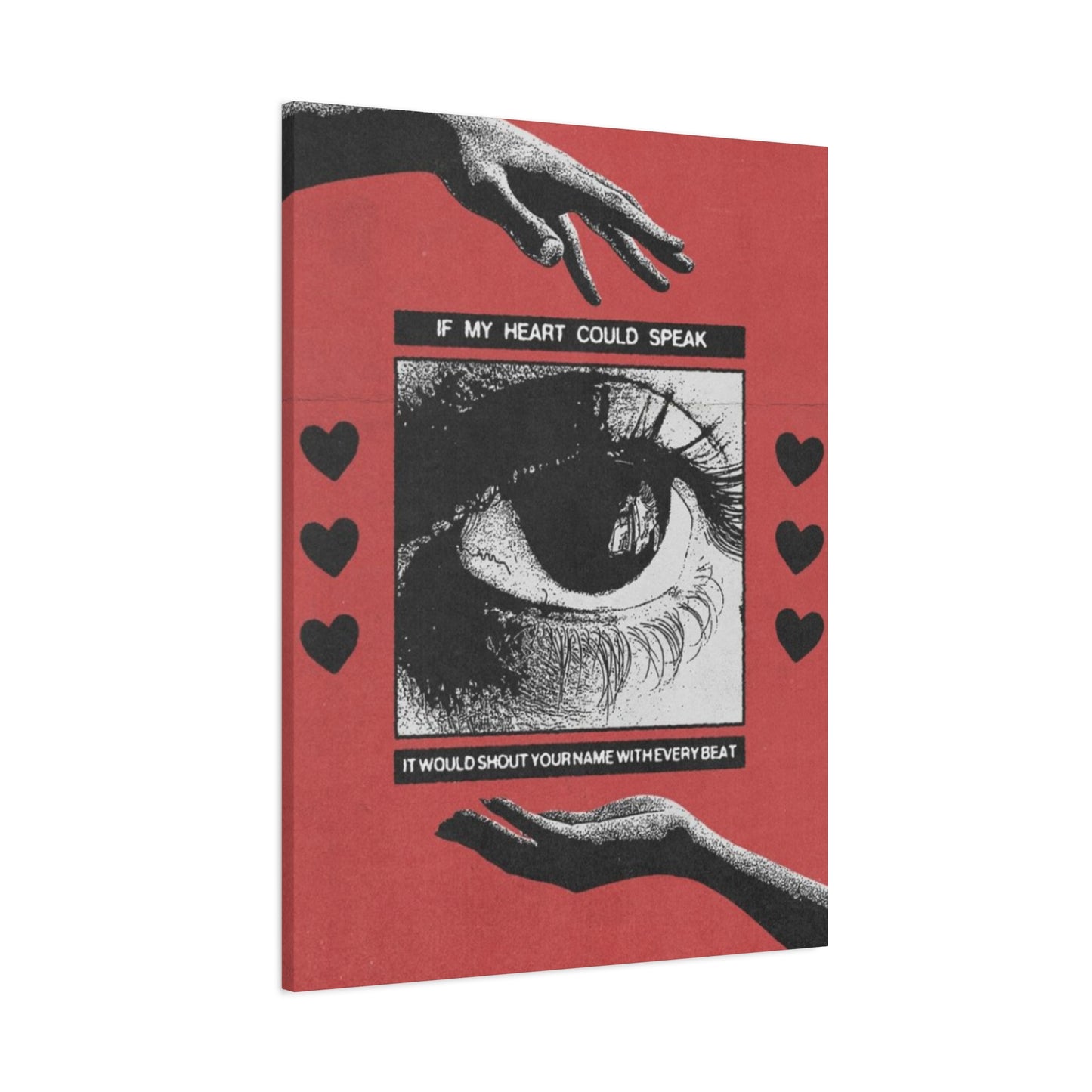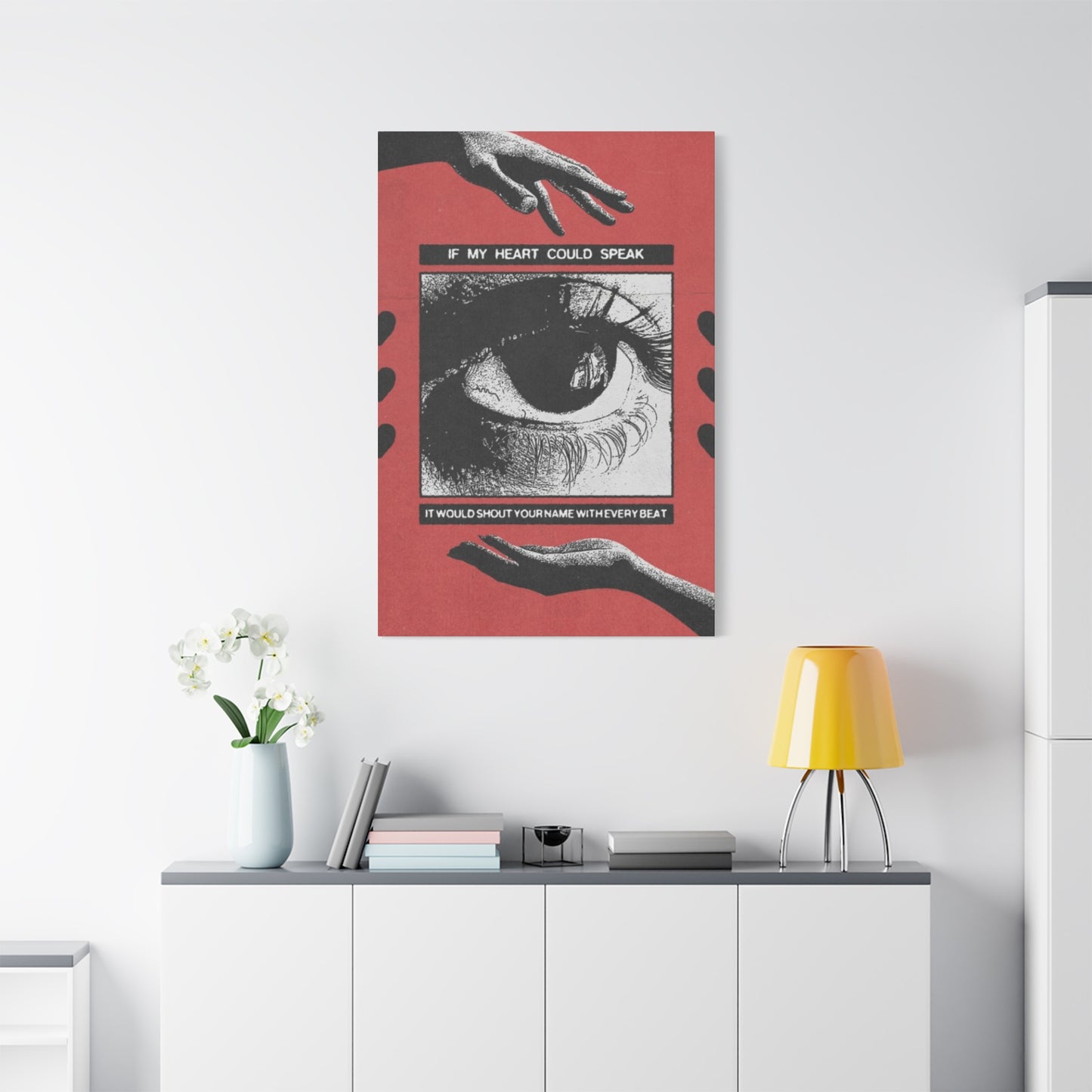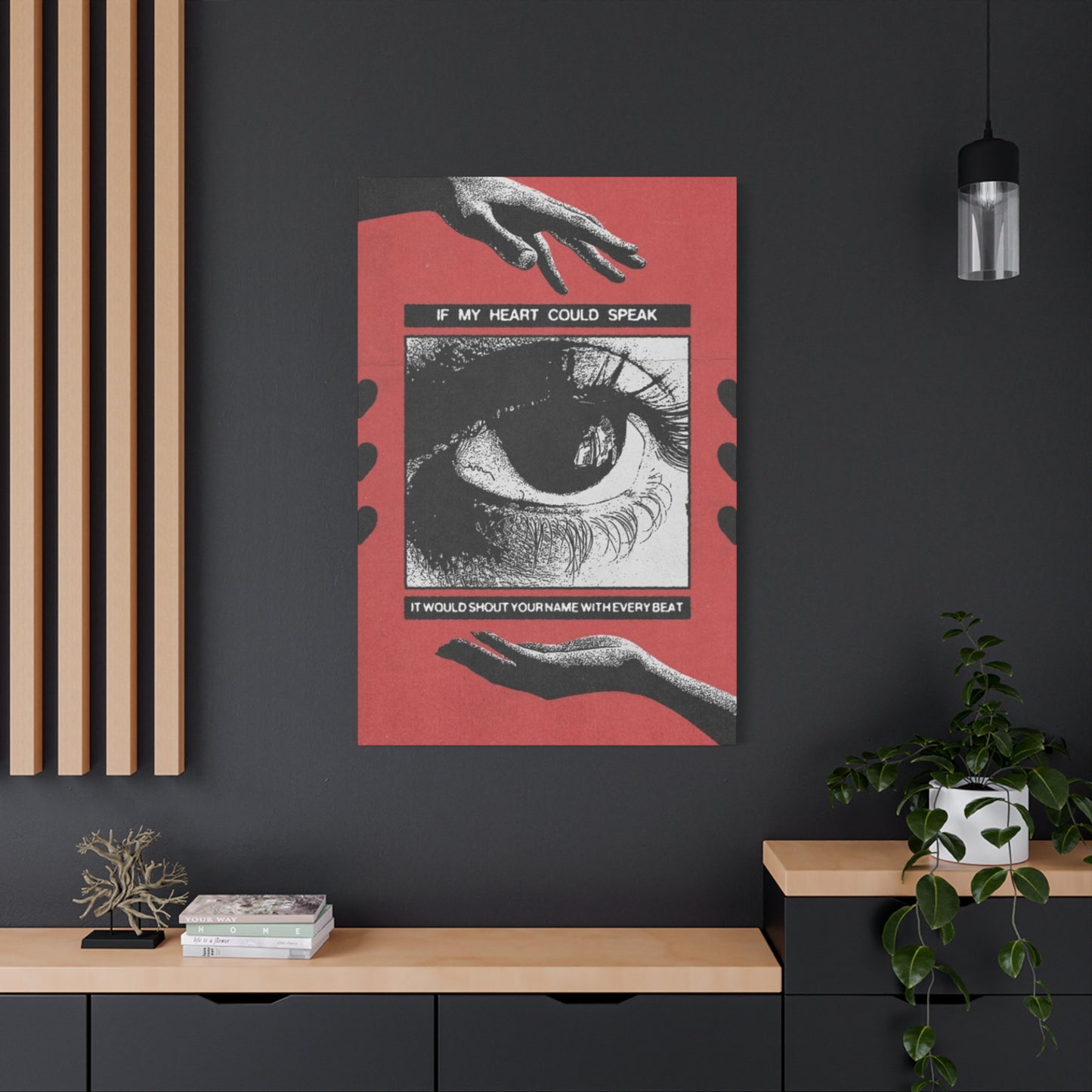Eyes to the Soul: The Definitive Guide to Eye Painting Wall Art
The human eye. It is a biological marvel, a complex organ of sight, but its significance transcends the purely scientific. For millennia, it has been revered as a powerful symbol, a "window to the soul," a conduit of emotion, and a talisman of protection. In the realm of art, the eye is one of the most enduring and compelling motifs, capable of conveying a universe of meaning within a single, mesmerizing gaze. From the protective nazar amulets seen across South Asia and the Middle East to the canvases of Surrealist masters and contemporary artists, the eye watches, communicates, and captivates.
Here, on a quiet Thursday night in Faisalabad, a city in the heart of Pakistan's Punjab province, one is reminded of how universal this symbol truly is. It's a motif that connects the intricate patterns of local truck art with the high-concept galleries of New York. This enduring power is what makes eye painting wall art such a profound choice for home decor. It's more than just an image; it's a story, a guardian, a piece of personal expression. This is especially true of abstract and mixed-media interpretations, which move beyond literal representation to explore the deeper, symbolic resonance of the eye. This guide will delve into every facet of this fascinating art form—from interpreting its rich symbolism and styling it within your home to the practicalities of collecting your own unique piece. Prepare to look deeper and discover how the timeless gaze of eye art can transform your space.
Abstract Eye Paintings That Tell a Story
An abstract painting of an eye does something a realistic portrait cannot: it liberates the gaze from the identity of a person and transforms it into a universal vessel of narrative and emotion. When an artist chooses abstraction, they are intentionally moving away from a literal depiction to capture an essence, a feeling, or a complex idea. An abstract eye painting isn't about who is looking; it's about the story embedded within the act of looking itself.
The narrative is told through the fundamental elements of art: color, line, and texture. A chaotic explosion of fiery reds and oranges within the iris might tell a story of passion, rage, or a creative fire burning within. In contrast, an eye rendered in cool, flowing blues and soft lavenders could speak of melancholy, introspection, or a deep sense of calm. The colors become the emotional vocabulary of the story. A single, crimson tear falling from the corner doesn't just depict sadness; it can represent a past trauma, a societal wound, or a moment of profound release.
The artist's brushstrokes and lines dictate the story's pace and energy. Sharp, jagged lines might convey anxiety or conflict, a story of a restless soul. Soft, blended edges and swirling forms can create a dreamlike narrative, suggesting a story rooted in memory or fantasy. The composition itself builds the plot. An eye that is half-hidden in shadow might tell a story of secrets or shyness, while an eye that stares directly out, filling the entire canvas, tells a story of bold confidence or confrontation.
Texture in an abstract piece adds another layer of depth, making the story tactile. A smooth, glossy surface might reflect a story of clarity and modernity, while a rough, impasto surface with thick layers of paint suggests a story with a complex, perhaps difficult, history. By foregoing realism, the artist invites the viewer to become a co-author of the narrative. Your own experiences and emotions will inform what you see. An abstract eye painting isn't a statement; it's a conversation. It tells a story that is completed only when it meets the gaze—and the soul—of the person looking back.
The All-Seeing Eye: A Mixed Media Perspective
The All-Seeing Eye is an archetypal symbol, a singular, often disembodied eye that represents concepts of divine providence, spiritual enlightenment, and omnipresent knowledge. It is an image steeped in history, from the ancient Egyptian Eye of Horus symbolizing protection and healing, to the Eye of Providence floating within a pyramid, a well-known Masonic and spiritual symbol. In a contemporary art context, a mixed-media approach breathes new life into this ancient icon, creating a rich dialogue between its historical weight and modern expression.
Mixed media is the use of multiple materials on a single artwork. When an artist creates an All-Seeing Eye using this technique, they are layering not just materials, but also meaning. A canvas might begin with a traditional acrylic or oil painting of the eye's basic form. The artist might then incorporate collage elements, such as snippets of old maps, vintage newspaper text, or pages from philosophical books. This immediately situates the all-seeing eye within a context of human history, knowledge, and geography. The eye is no longer just a divine entity; it is a witness to our collected stories and discoveries.
The use of texture and found objects adds another dimension. An artist might use thick texture paste to build up the rays of light emanating from the eye, making its divine knowledge feel tangible and real. Embedding small, symbolic objects—a tiny key, a clock gear, a dried flower—into the canvas can add layers of personal or universal meaning. The key could represent hidden knowledge, the gear could symbolize the workings of the universe, and the flower might speak to the cycle of life and death that the eye oversees.
Luxurious materials like gold or silver leaf are often used in mixed-media interpretations of the All-Seeing Eye. This directly references the symbol's divine and sacred origins, connecting the contemporary piece to the gilded icons and illuminated manuscripts of the past. The way the metallic leaf catches the light gives the artwork a dynamic, living quality, as if the eye is truly radiating its own spiritual energy. Through this fusion of painting, collage, texture, and precious materials, the mixed-media artist doesn't just replicate the All-Seeing Eye; they deconstruct and reimagine it, creating a powerful, multi-layered talisman for the modern world.
How to Interpret Eye Symbolism in Wall Art
Interpreting the symbolism of an eye in wall art is a deeply personal yet culturally informed process. The eye is a polyvalent symbol, meaning it holds multiple, often simultaneous, meanings. To truly connect with a piece of eye art, it helps to understand the rich symbolic language it might be speaking. Here's a guide to interpreting its most common themes.
1. Protection and Warding Off Evil: Perhaps the most ancient and widespread meaning is that of protection. The Nazar (a blue, eye-shaped amulet popular in the Middle East and South Asia), the Eye of Horus in ancient Egypt, and the Hamsa hand with an eye in its palm are all powerful talismans believed to ward off the "evil eye" and protect the bearer from harm. When you see a stylized, bold, and centrally located eye in a piece of art, it often channels this protective energy. It acts as a guardian for your home, a watchful presence that keeps negative energy at bay.
2. Wisdom, Knowledge, and Enlightenment: The eye is a symbol of sight, and sight is a metaphor for knowledge. The "third eye" in many Eastern spiritual traditions represents a gateway to higher consciousness and enlightenment. An eye in art can symbolize the search for truth, intellectual clarity, and spiritual wisdom. Artworks that depict an eye opening, or with rays of light emanating from it, often tap into this theme of awakening and profound understanding.
3. The Soul and Personal Truth: The phrase "the eyes are the windows to the soul" is a core concept in art. An eye painting can be a form of portraiture, not of a physical person, but of an inner state of being. The expression within the eye—be it joyful, sorrowful, or serene—is a direct communication of emotion. A piece of eye art that resonates with you might be reflecting a part of your own inner world, serving as an expression of your personal truth.
4. Consciousness and Presence: An eye in art can simply represent the act of being aware and present. It's a reminder to "look" and truly see the world around you. In a fast-paced world, an eye on your wall can be a grounding symbol, a prompt to practice mindfulness and appreciate the current moment.
5. Surveillance and Scrutiny: Not all eye symbolism is positive. In a modern context, the eye can also represent themes of surveillance, judgment, and the loss of privacy. This interpretation, often seen in more provocative or political art, draws on Orwellian concepts of "Big Brother." While less common in decorative art, it's a powerful layer of meaning that adds complexity to the symbol.
When you look at a piece of eye art, consider these meanings. Does it feel like a protector, a source of wisdom, a reflection of your soul, a reminder to be present, or a commentary on scrutiny? Your personal interpretation is what gives the art its true power and meaning within your space.
Mixed Media Eye Art as Personal Expression
For an artist, a mixed-media eye artwork is far more than a depiction of a symbol; it is a profound act of self-portraiture and personal expression. By building the image from a diverse array of materials, the artist embeds their own history, passions, and worldview directly onto the canvas. The finished piece becomes a unique and deeply personal artifact, a window not just into a symbolic soul, but into the artist's own.
The choice of materials is the primary vehicle for this expression. An artist might incorporate fragments of personal letters or diary entries, their own handwriting becoming a textural and literal layer of their inner thoughts. They might use pieces of fabric from a cherished garment, embedding a memory of a person or a time directly into the artwork. Found objects from nature—a pressed leaf, a small stone, a feather—can represent the artist's connection to the natural world or a specific place that holds meaning for them. These materials transform the artwork into a highly personal tapestry of memory and experience.
The technique itself is a form of expression. An artist who meticulously cuts and pastes tiny fragments of paper to form an iris is expressing a patient and detail-oriented personality. An artist who aggressively applies thick layers of texture paste and embeds sharp, broken objects might be expressing feelings of anger, turmoil, or a fractured sense of self. The physical act of making the art—the tearing, the gluing, the layering—is a performance of emotion.
This form of art also allows for powerful social and cultural commentary filtered through a personal lens. An artist might use clippings from fashion magazines to construct the eye, commenting on societal standards of beauty. They might use shredded currency to critique consumerism or fragments of political headlines to express their engagement with current events. The eye, in this context, becomes the artist's personal viewpoint, their way of seeing and processing the world around them.
When you acquire a piece of mixed-media eye art, you are therefore acquiring more than an object. You are connecting with an artist's story. It's an invitation to look "behind the canvas" and appreciate the layers of thought, memory, and emotion that have been brought together to form that single, compelling gaze. It is personal expression at its most raw, tactile, and visually stunning.
Behind the Canvas: What the Eye Represents in Art
Throughout the vast timeline of art history, the eye has remained one of the most persistent and symbolically charged motifs. Its representation has evolved, but its core power as a focal point of meaning has never waned. Understanding this historical context enriches our appreciation for contemporary eye paintings and reveals the deep cultural currents that flow into them.
In ancient civilizations, the eye was predominantly a symbol of divinity and power. The Eye of Horus from ancient Egypt is one of the earliest and most recognizable examples, representing protection, royalty, and good health. In Mesopotamian cultures, oversized eyes on votive statues were believed to indicate the figure's devout attention to the gods. In these contexts, the eye was a direct link to the sacred and the supernatural.
During the Renaissance, as art shifted towards humanism and realism, the focus turned to the eye as the "window to the soul." Artists like Leonardo da Vinci became masters of capturing the subtle nuances of the human gaze to convey personality and inner life. The direction of a glance, the moisture on a cornea, the slight furrow of a brow—these details were used to create lifelike portraits that seemed to possess a psychological depth previously unseen. The eye became the key to unlocking the subject's humanity.
The Surrealist movement of the 20th century fractured and reimagined the eye, detaching it from the body to explore the subconscious mind. Artists like Salvador Dalí in his collaboration with Luis Buñuel on the film Un Chien Andalou (with its shocking eye-slitting scene) and painters like René Magritte (in works like The False Mirror, which depicts a cloud-filled sky within an eye) used the motif to challenge perception and reality. For the Surrealists, the eye was not about seeing the external world, but about the strange and irrational world within our dreams and minds.
In contemporary art, artists draw from all these historical layers. A modern artist creating an abstract eye painting is in dialogue with the divine symbolism of ancient Egypt, the humanism of the Renaissance, and the psychological probing of the Surrealists. They may use the eye to explore themes of identity, technology's impact on surveillance, or the nature of perception itself. Whether it's a realistic rendering, a symbolic icon, or an abstract explosion of color, the eye in art remains the ultimate focal point—a direct, intimate, and powerful connection between the artwork, the artist, and the viewer.
Styling Your Space with Eye Painting Wall Art
Styling your home with eye painting wall art is an opportunity to make a bold, personal, and meaningful statement. This powerful motif can anchor a room, create a specific mood, and reflect your unique personality. However, its effectiveness depends on thoughtful placement and an understanding of how it interacts with your existing decor. Here are some key principles for styling your space with eye art.
First, define the mood you want to create. The emotional tone of the artwork will radiate throughout the space. Do you want a calm, introspective sanctuary? Choose a piece with a soft, muted color palette and a serene or closed-eyed expression. This would be perfect for a bedroom or a quiet reading nook. Do you want to create an energetic, social, and inspiring space? Opt for a piece with vibrant colors, dynamic brushstrokes, and a direct, wide-open gaze. This would be ideal for a living room, dining room, or creative studio.
Next, consider the scale. The size of the artwork relative to the wall and the furniture is crucial. A large, oversized eye painting can serve as the dramatic focal point of an entire room, a powerful statement that requires little other wall decor. A smaller, more intimate piece can create a "jewel box" moment in a small nook, on a narrow wall between two doors, or as part of a larger gallery wall. As a general rule, art hung above a sofa or console table should be about two-thirds the width of the furniture.
Placement is everything. The traditional placement is at eye level, with the center of the artwork around 57-60 inches from the floor. However, don't be afraid to break the rules for dramatic effect. Leaning a large, framed piece against the wall on a mantelpiece or sideboard creates a casual, layered, and sophisticated look. In a gallery wall, the eye painting often works best as the central "anchor" piece, with other, more subdued artworks arranged around it.
Finally, create a dialogue with your decor. The artwork shouldn't exist in a vacuum. Pull one or two of the accent colors from the painting and repeat them in small doses throughout the room—in a throw pillow, a vase, or a decorative object. This creates a cohesive and professionally styled look. The frame of the art should also complement your existing style—a natural wood frame for a bohemian space, a sleek black metal frame for a modern one, or an ornate gold frame for an eclectic room. By thoughtfully considering mood, scale, placement, and context, you can seamlessly integrate the powerful gaze of eye art into your home.
How Eye Art Creates a Focal Point in Any Room
In the language of interior design, a focal point is the visual element that the eye is immediately drawn to upon entering a room. It's the anchor of the design, the star of the show around which all other elements are arranged. While a fireplace, a large window, or a statement piece of furniture can serve this role, a piece of eye art is uniquely, almost unfairly, effective at capturing this coveted position. The reason lies deep within our own biology and psychology.
Humans are hardwired for facial recognition. From the moment we are born, our brains are programmed to seek out, recognize, and interpret faces, and specifically eyes, for survival and social connection. We look to the eyes to gauge emotion, intent, and direction of attention. This instinct is so powerful that we even see faces and eyes in inanimate objects, a phenomenon known as pareidolia. When you place a painting of an eye on a wall, you are tapping directly into this primal, subconscious instinct. The brain cannot help but be drawn to it. It's an instant and effortless magnet for attention.
This natural magnetism is amplified by the direct gaze often depicted in eye art. When the eye in the painting is looking straight out, it creates a powerful sense of connection and engagement with the viewer. It feels as though you are being seen, creating a dynamic, one-on-one interaction between you and the artwork. This engagement is what solidifies the piece as the room's focal point. It's not a passive object; it's an active presence in the space.
Eye art also creates a focal point through its potential for high contrast and color. An abstract eye with a vibrant, jewel-toned iris set against a neutral wall is a classic example of creating a focal point through color. Similarly, a piece with a stark black-and-white composition provides a powerful point of graphic contrast. This visual "pop" ensures that the artwork stands out from its surroundings.
To maximize the focal power of your eye art, give it pride of place. Position it on the wall that is most visible from the room's entrance. Ensure it is properly lit, either with natural light or with a dedicated art light, to draw further attention to it. Keep the immediate surrounding area relatively uncluttered to allow the artwork to breathe and command the space. By leveraging our innate attraction to the eye, you can create a powerful, captivating, and deeply personal focal point in any room.
Eye Paintings for Boho and Eclectic Interiors
Bohemian (boho) and eclectic interior design styles are celebrations of the unconventional, the personal, and the free-spirited. They are characterized by a rich mix of patterns, textures, natural elements, and objects collected over time. Eye paintings, with their deep roots in spirituality, mysticism, and personal expression, are a match made in heaven for these vibrant and soulful aesthetics.
In a boho interior, the eye motif connects directly to the style's emphasis on spirituality, nature, and global influences. A painting of the Hamsa or a stylized Nazar feels perfectly at home amidst a collection of macrame wall hangings, lush indoor plants, and hand-woven textiles from around the world. The protective symbolism of the eye resonates with the boho desire to create a safe, nurturing, and spiritually-aware sanctuary. Mixed-media eye art is particularly effective here, as its use of natural and tactile materials—like wood, fabric, and clay—complements the organic textures found in boho decor. A painting in an earthy color palette of terracotta, ochre, and sage green, framed in natural, unfinished wood, would be a perfect addition.
Eclectic interiors are all about the artful mixing of different styles, eras, and colors. The guiding principle is "controlled chaos"—a curated collection that looks personal and spontaneous, yet harmonious. An eye painting serves as a fantastic unifying element or a point of quirky contrast in an eclectic space. A large, surrealist-inspired eye painting can act as a bold, whimsical focal point that ties together a vintage velvet sofa, a modern chrome lamp, and an antique Persian rug. It's a statement of confidence that says, "Yes, these things belong together because I love them."
The personal nature of eye art is key to its success in these styles. Both boho and eclectic design are about telling a story—your story. An abstract eye painting that reflects your inner emotional landscape or a mixed-media piece that incorporates elements meaningful to you becomes a central chapter in that story. It’s a deeply personal icon that grounds the collection of disparate objects around it. Don't be afraid to layer. Hang a smaller eye painting as part of a sprawling gallery wall, or place it on a shelf surrounded by crystals, travel souvenirs, and your favorite books. In these expressive, personality-driven interiors, an eye painting is not just decor; it's a piece of your soul.
Mixing Eye Art with Minimalist Decor
Minimalism is a design philosophy centered on simplicity, intentionality, and the removal of the superfluous. A minimalist space is a breath of fresh air, characterized by clean lines, a neutral color palette, and an abundance of negative space. At first glance, the idea of adding a complex, symbolic piece like an eye painting might seem counterintuitive. However, it is precisely this juxtaposition that can create a stunning and deeply impactful interior.
In a minimalist room, every single object carries more weight. There is no clutter to distract the eye, so each piece must be chosen with immense care and purpose. A single, powerful piece of eye art can serve as the sole focal point and the emotional heart of an otherwise serene and restrained space. It's a concept known as "minimalist maximalism"—a single, bold, expressive gesture within a minimal framework.
The key to making this pairing work is contrast. A highly detailed, perhaps colorful or richly textured mixed-media eye painting provides a stunning counterpoint to the smooth, unadorned surfaces of a minimalist room. It introduces a moment of complexity, emotion, and organic form into a highly structured environment. This contrast is what makes the design feel dynamic and alive, preventing the minimalist aesthetic from becoming cold or sterile.
To maintain the minimalist ethos, the presentation of the art is crucial.
-
Embrace negative space: Hang the artwork on a large, empty wall, allowing plenty of white space around it. This emphasizes the artwork's importance and gives it room to breathe.
-
Choose a simple frame: A thin, gallery-style black, white, or natural wood frame is ideal. A floating frame, which leaves a gap between the canvas and the frame, is another excellent choice as it creates a clean, sophisticated look.
-
Focus on one: Resist the urge to create a gallery wall. The power of this combination lies in the impact of a single, solitary piece. Let the eye painting be the room's singular statement.
The symbolism of the eye also takes on a unique resonance in a minimalist setting. In a space designed for clarity and mindfulness, the eye can represent a focus on inner vision, consciousness, and seeing the essential. It becomes a visual anchor for contemplation. By thoughtfully placing one exceptional piece of eye art in a minimalist interior, you create a space that is not only simple and calming but also soulful and profound.
Why Mixed Media Eye Wall Art Suits Modern Homes
Modern interior design, born from the "form follows function" ethos, is defined by clean lines, geometric shapes, simple color palettes, and the use of materials like metal, glass, and plastic. While this creates a sleek, uncluttered, and sophisticated look, it can sometimes lack the warmth, personality, and tactile richness that make a house feel like a home. This is precisely why mixed-media eye wall art is such a perfect complement to modern interiors.
The primary reason is texture. Modern homes are often dominated by smooth, hard surfaces. Think of polished concrete floors, lacquered kitchen cabinets, chrome furniture legs, and glass tabletops. A mixed-media artwork introduces a crucial layer of complex, organic texture that breaks up this uniformity. The varied surfaces of the art—the rough texture paste, the crinkled paper of a collage, the soft fibers of an embedded piece of fabric, the raw edge of the canvas—provide a rich tactile contrast. This textural interplay adds visual interest and a sense of handcrafted warmth, preventing the modern space from feeling too stark or industrial.
Mixed-media art also offers depth and complexity. The layering of different materials creates a physical depth that a simple print or painting cannot achieve. This complexity provides a compelling counterpoint to the simplicity of modern design. In a room where every piece of furniture has a clean, simple silhouette, the intricate and multi-layered surface of a mixed-media eye becomes a fascinating focal point, a world to be explored up close.
Furthermore, the symbolic nature of the eye adds a layer of soul and narrative to a style that can sometimes prioritize aesthetics over emotion. A modern home is a carefully curated space. Placing a powerful, symbolic piece of art at its center suggests that this curation is not just about looks, but about creating a meaningful environment. The eye, representing consciousness, soul, and protection, infuses the sleek space with a sense of humanity and personal history.
To integrate it seamlessly, choose a piece with a color palette that complements your modern decor, or opt for a largely monochromatic piece that focuses purely on texture. A simple, floating frame will align with the clean aesthetic. By introducing the tactile, complex, and soulful presence of a mixed-media eye painting, you can elevate a modern house into a truly sophisticated and deeply personal home.
Eye-Themed Art for Small Space Styling
Styling a small space comes with a unique set of challenges and opportunities. Every square inch matters, and the goal is to create a space that feels functional, open, and full of personality without feeling cluttered. While conventional wisdom might suggest avoiding bold decor in small rooms, a piece of eye-themed art can be a surprisingly effective tool for enhancing a compact space.
The secret is to use the artwork to create a "jewel box" effect. Instead of trying to make the room look bigger with visual tricks, you embrace its small size and turn it into a precious, intimate, and highly curated space. A single, small-to-medium-sized eye painting, particularly a detailed mixed-media piece, can act as the "jewel" in this box. Its intricate details and powerful gaze draw the viewer in, creating a focal point that is captivating and full of depth. This pulls focus away from the room's limited dimensions and directs it towards the art's own miniature world.
An eye painting is also effective in a small space because of its inherent sense of presence. The direct gaze of the eye can create an illusion of depth, as if you are looking through a window into another space. This can subtly counteract any feelings of claustrophobia. The art gives the room a "personality" and a watchful presence, making it feel more like a cozy sanctuary than a cramped box.
Here are a few strategies for using eye art in small spaces:
-
Go vertical: In a room with limited floor space, draw the eye upward. A vertically oriented eye painting can create an illusion of height, making the ceiling feel further away.
-
Use unexpected nooks: A small, intriguing eye painting is perfect for that awkward, narrow wall in a hallway, the space above a small desk in a studio apartment, or in a powder room. These unexpected placements provide a delightful moment of discovery.
-
Light it well: A small, well-lit piece of art can have a huge impact. Use a small, adjustable picture light or place it on a wall where it will be illuminated by a nearby lamp to make it a true focal point.
-
Choose wisely: In a small room, one piece of art may be all you have space for. Select a piece that you truly love and that has enough detail and symbolic meaning to hold your interest over time.
By using an eye painting as a concentrated point of interest and personality, you can transform a small space from a design challenge into a charming and deeply personal retreat.
Making a Statement with Large-Scale Eye Paintings
While small art has its place, there is nothing quite as dramatic, confident, and transformative as a large-scale eye painting. Going oversized with your art is a bold design choice that instantly elevates a room from simply "decorated" to "curated." It's a statement of intent, creating an immersive and unforgettable focal point that defines the entire character of a space.
The primary power of a large-scale eye painting lies in its immersive quality. When an artwork takes up a significant portion of a wall, it's no longer just an object in the room; it becomes part of the room's architecture. The viewer is not just looking at a picture; they are confronted by a presence. A massive, wall-sized eye creates a powerful, almost theatrical experience. The gaze feels more intense, the details of the brushstrokes or mixed-media elements are more apparent, and the emotional impact is amplified a hundredfold.
This approach is particularly effective in rooms with high ceilings or large, empty walls, such as a living room with a vaulted ceiling, a spacious entryway, or a minimalist loft. The large canvas can fill the vertical space, drawing the eye upward and emphasizing the grandeur of the room. It solves the common design problem of a large wall feeling empty or intimidating, turning it into the room's greatest asset.
A large-scale eye painting is the ultimate conversation starter. It is impossible to ignore. Guests will be immediately drawn to it, and its bold, symbolic nature invites questions and interpretations. It sets a confident and artistic tone for your home, signaling that this is a space where creativity and bold expression are valued.
When making such a statement, the surrounding decor should play a supporting role.
-
Keep the wall clear: Don't clutter the same wall with other art or furniture. Let the large piece command the space on its own.
-
Use simple furniture: Furniture with clean lines and solid colors will prevent the room from feeling visually chaotic. The eye painting should be the undisputed star.
-
Light it professionally: Proper lighting is essential for a large piece. Track lighting with multiple spots or a long, linear picture light will ensure the entire canvas is evenly illuminated, bringing out its colors and textures.
Making the commitment to a large-scale eye painting is a fearless design move. It's a way to infuse your home with unparalleled drama, personality, and a profound sense of presence, creating a space that is truly a work of art in itself.
Eye Art Decor Ideas for Bedrooms and Studios
The bedroom and the creative studio are two of the most personal spaces in a home, but they serve very different purposes. The bedroom is a sanctuary for rest and introspection, while the studio is a hub of energy and creation. Eye art, with its vast range of styles and symbolic meanings, can be perfectly tailored to enhance the unique atmosphere of each of these important rooms.
In the Bedroom: The goal in a bedroom is to create a calming, intimate, and restorative environment. Eye art in this context should lean towards the dreamy, protective, and introspective.
-
Mood: Choose pieces that evoke a sense of peace. An eye that is gently closed or looking downward can create a feeling of serenity and contemplation. Abstract interpretations with soft, blended colors—like muted blues, soft grays, lavenders, and dusty pinks—can have a soothing, dreamlike quality.
-
Symbolism: Focus on the protective aspect of the eye. A stylized Hamsa or Nazar painting hung above the bed can act as a beautiful, modern talisman, watching over you as you sleep. It creates a sense of a safe and sacred space.
-
Placement: The wall above the headboard is a prime location. It creates a stunning focal point without being in your direct line of sight when you're trying to fall asleep. A smaller piece on a nightstand or dresser can also add a personal, intimate touch.
In the Studio: A creative studio, whether for art, music, or writing, should be a space that inspires energy, focus, and innovation. Eye art here should be energizing, inspiring, and a reflection of the creative vision.
-
Mood: Opt for bold, dynamic, and thought-provoking pieces. An eye with a wide-open, direct gaze can feel motivating and focused. Vibrant, high-contrast colors can stimulate creativity and energy. A more surreal or abstract piece can encourage out-of-the-box thinking.
-
Symbolism: Here, the eye represents vision, perception, and the "spark" of a new idea. It can be a reminder to "see" the world differently and to trust your unique creative perspective. A painting of the "third eye" could be particularly powerful, symbolizing a connection to intuition and higher creativity.
-
Placement: Place the artwork directly in your line of sight from your main workspace (your desk, easel, or instrument). When you look up for a moment of pause, the artwork can provide a jolt of inspiration and help you refocus your creative energy. A large piece can serve as a mood board, setting the energetic tone for the entire creative process.
By carefully selecting the style, symbolism, and placement of eye art, you can harness its power to cultivate the perfect atmosphere for both rest and creation.
Combining Eye Wall Art with Other Abstract Pieces
Creating a gallery wall is a popular and deeply personal way to display art, but mixing different abstract pieces can be challenging. How do you create a collection that looks cohesive and curated, rather than chaotic and random? When incorporating a powerful, symbolic piece like an eye painting, the key is to establish a visual dialogue between it and the other artworks. The eye art can serve as the "protagonist" of the wall, with the other pieces acting as the supporting cast.
The most effective way to create cohesion is through a shared color palette. This is the easiest and most impactful unifying element. Identify two or three key colors in your eye painting—perhaps a deep indigo, a touch of gold, and a creamy white—and then select other abstract pieces that feature at least one of these colors. The other artworks don't need to match perfectly; they just need to speak the same color language. This creates a harmonious flow that guides the viewer's eye across the entire arrangement.
Another strategy is to unify the collection through theme or form. If your eye painting has a very organic, fluid feel, pair it with other abstract pieces that feature curved lines, soft shapes, and natural motifs. Conversely, if your eye art is more graphic and geometric, it would pair well with other pieces that feature strong lines, hard edges, and bold, simple shapes. The thematic connection can be more subtle. An eye painting, symbolizing consciousness, could be paired with an abstract landscape (representing the external world) and a cellular-looking abstract (representing the internal world), creating a sophisticated narrative about perception.
Varying the scale and orientation of the artworks is crucial for creating a dynamic layout. Don't use all medium-sized, square canvases. Mix large and small pieces, and combine vertical, horizontal, and square formats. The eye painting often works best as the central or largest piece, the anchor from which the rest of the collection expands.
Don't forget the frames. Using the same color or style of frame for all the pieces is a simple trick to instantly unify a disparate collection of art. A collection of different abstract pieces all framed in simple black gallery frames will look intentional and chic. By finding a common thread—whether it's color, form, theme, or framing—you can successfully integrate a captivating eye painting into a larger abstract story on your wall.
Choosing Frames for Mixed Media Eye Paintings
The frame is the final touch that completes a piece of art, the punctuation mark at the end of a visual sentence. For a mixed-media eye painting, with its inherent texture and depth, choosing the right frame is especially important. The frame should not just protect the artwork; it should enhance its unique qualities and connect it to the style of your room.
The Floating Frame (or Floater Frame): This is often the best choice for mixed-media canvases. A floating frame is a type of frame where the canvas is mounted from the back, leaving a small gap (usually about 1/4 inch) between the edge of the canvas and the inside edge of the frame. This creates the illusion that the artwork is "floating" within the frame. This style is ideal for mixed-media pieces because it doesn't cover the edges of the canvas, allowing any texture, collage, or paint that extends to the sides to remain visible. It provides a clean, crisp, and contemporary finish that respects the artwork as a three-dimensional object. Floating frames are available in various finishes, with simple black, white, or natural wood being the most popular for modern and minimalist decor.
The Gallery Frame: A classic gallery frame is a simple, thin-profile frame, typically in black, white, or a natural wood finish. It's a minimalist choice that puts the focus squarely on the artwork. This is a great option if you want to integrate the eye painting into a larger gallery wall with other pieces, as it provides a clean and uniform look. It works well for pieces that are on paper or have a lower profile.
The Natural Wood Frame: For eye paintings styled in bohemian, rustic, or eclectic interiors, a natural wood frame is a perfect choice. The organic material and visible grain of the wood complement the often mystical and earthy themes of eye art. A raw, unfinished pine frame can add a rustic touch, while a warmer walnut or oak frame can add a touch of mid-century sophistication.
The Ornate Frame: For a maximalist or eclectic space, don't be afraid to go bold with an ornate, decorative frame, perhaps in an antique gold or silver finish. The juxtaposition of a contemporary, abstract eye painting within a traditional, baroque-style frame can create a stunning and unexpected design statement. It’s a confident move that treats the modern artwork with the reverence of an old master painting.
When choosing, also consider the artwork's colors. A black frame will make the colors pop, a white frame can give it a light and airy feel, and a wood frame will add warmth. The right frame is the one that not only looks good but also honors the unique, tactile nature of your mixed-media eye painting.
Conclusion
Eye painting wall art holds a unique and compelling place in the realm of interior decor, serving as a powerful conduit between the viewer and the deeper emotions and stories behind each gaze. The eye, often called the “window to the soul,” captures attention with its intensity and expressiveness, making eye-themed artwork a profound addition to any space. This art form transcends mere decoration by inviting reflection, connection, and emotional engagement.
The allure of eye paintings lies in their ability to evoke mystery, vulnerability, and insight. Each piece tells a story—whether through realistic detail, abstract interpretation, or surreal distortion—allowing viewers to engage with the art on multiple levels. This dynamic creates a powerful focal point in any room, encouraging mindfulness and empathy. Eye art is not only visually striking but also deeply symbolic, representing awareness, perception, and the human experience itself.
One of the remarkable features of eye painting wall art is its versatility. These works can complement a variety of design aesthetics, from bold contemporary spaces to intimate, cozy rooms. They can serve as dramatic statement pieces or subtle accents, depending on the scale and style chosen. Whether rendered in vivid color or monochromatic tones, eyes command attention and invite contemplation, enhancing the emotional atmosphere of any environment.
In addition to aesthetic appeal, eye paintings often spark curiosity and conversation. Their enigmatic quality can provoke questions about identity, emotion, and connection—turning walls into spaces of dialogue and introspection. This makes eye-themed art particularly effective in personal spaces like living rooms, bedrooms, or creative studios, where emotional resonance and inspiration are key.
Moreover, artists employ a wide range of techniques in eye painting—from hyper-realistic portraits that capture every nuance of light and shadow, to abstract and surreal compositions that challenge perception and reality. This diversity allows you to select pieces that truly resonate with your personal taste and the mood you wish to cultivate.
In conclusion, eye painting wall art is a compelling way to infuse your space with emotional depth, symbolism, and striking beauty. It transforms walls into portals of connection and reflection, reminding us of the profound power behind a single gaze. Whether you seek to create a contemplative sanctuary or a bold artistic statement, eye-themed art offers an unforgettable way to capture the soul’s essence and invite it into your home.



















